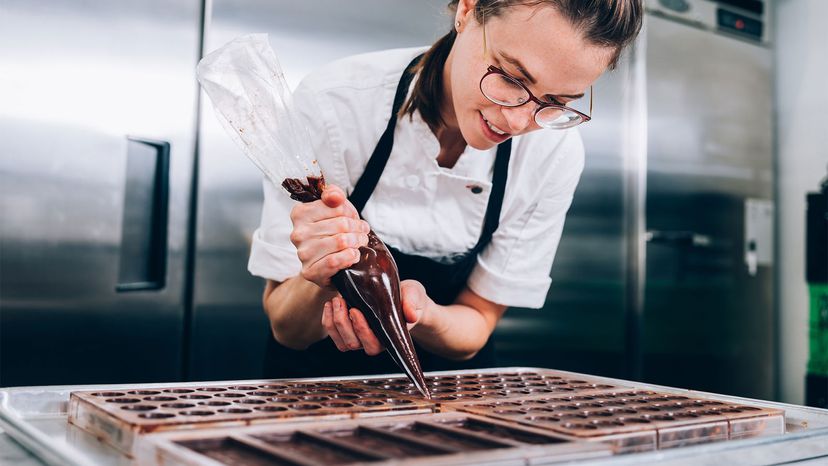Why Designer Chocolate Costs So Much

Much like other products of varying price points and quality (like beer and wine) there's a huge range of normal in the cost of chocolate treats. You're simply not going to pay the same for a run-of-the-mill Hershey's bar and an artisan bar produced by a much smaller company.
This is in large part because artisan bars take much longer to make, with some functions of the process being performed by hand. Craft chocolate shops account for less than 2 percent of chocolate producers in the U.S., with 200 craft chocolatiers in 2017, some of which only had three or fewer employees [source: National Confectioners Association]. By comparison, we all know that huge companies can make things more cheaply than mom and pop shops. They have better manufacturing facilities and more cost-effective contracts worked out with suppliers. Companies like Hershey's didn't start out huge though; they grew over time and fine-tuned the process to make it as efficient as possible.
Advertisement
Another factor that affects price point is that many large companies choose to source their beans from countries like the previously mentioned Ivory Coast, which is notorious for vastly under-compensating its farmers and workers. As a result, the big companies get the beans for next to nothing, passing on the savings in dubious fashion to the consumers, but not to the benefit of the farmers. Craft companies usually strive to pay the cocoa farmers a sustainable price for their goods. For their part, Hershey's website states that the company has committed to use 100 percent certified cocoa by 2020, meaning that they'll only use suppliers that follow a process committed to providing sustainable incomes for farmers [source: Hershey's].
Higher-end chocolatiers are also more focused on a quality taste experience, so they tend to source their beans from the more expensive, but better quality cacao farms of other African countries, like Madagascar and Tanzania, as well as some South American countries. These brands also prefer to not dilute the cacao flavor with a bunch of additional ingredients, so as a result they must use greater quantities of the pricier beans to get the job done [source: Abesamis]. For Lindt, their lowest cocoa content is 30 percent, with some products shooting all the way up to 99 percent! [source: Lindt]. Even Cadbury milk bars boast a minimum cocoa content of 20 percent, compared with Hershey's paltry 11 percent [sources: Cadbury; Gourmet Boutique].
Chocolate product selection honestly comes down to a question of personal taste. If you're happy with the taste and texture of a cheaper candy bar, save those dollars (or buy a lot more!). But if you long for a creamier, more decadent experience, go for high-end chocolatiers, or even "settle" for a midrange product like Lindt. You won't be alone — gourmet chocolates are having a moment.